We’re gathered here today to praise the greatest black metal bands who put out a single album and then quit. But first, a bit of customary jaw-flapping.
Think about the way our culture has romanticized the journey of a band: Outsider weirdos with similar taste find each other. They trade recommendations, maybe get together to jam. They realize there’s a spark, some inchoate thing that wants to be born. Woodshedding in the garage, long nights in the practice space. Crummy gigs with twenty people and only five of them are paying attention. Maybe they scrape together a bit of cash to record a demo. But they play, they record, they hit the road if they can. With a little more cash, finally an album. A record release show. More people are listening now. The groundswell, the buzz, the big break, the tour, the next album, and off into the sunset.
The hard reality is, most bands hit any one of a million skids and fizzle out before any of that happens. So it kinda feels like, if you manage to get your shit together long enough to record an album, you’ve got things figured out enough to keep it going. For that reason, I’m fascinated by those bands that cleared all those hurdles, channeled their time and sweat and money into recording A Proper Album, and then… nothing.
But exactly what is it about these lonesome albums that seems to give them extra power? Some of it must be that there’s a certain wistfulness involved if a band made one album that you love and then folded, because you can get caught up wondering what else might have been. But some of it is also just a numbers game: if Band A only made one album, and Band B made two albums, even if I feel like I love one of Band B’s albums as much as Band A’s one album, that one Band B album will never take up 100% of my Band B-related thinking and listening.
On a less mathematical level, though, there’s also the fact that these single album gems are almost by definition more likely to exist in the somewhat distant past, to feel almost like a magical artifact hidden to all but those of us attuned to its extinct frequency. Plus, if a band truly did drop a classic album and then piss off for eternity, they’ve removed the possibility that later albums might tarnish the mystical power of their first inspiration with watered-down drivel or trend-chasing nonsense. That’s why, for as much as I sometimes think I want to hear a follow-up to Thergothon’s Stream from the Heavens or Lykathea Aflame’s Elvenefris or Sentinel Beast’s Depths of Death or Disincarnate’s Dreams of the Carrion Kind, when a cooler head prevails I realize that each is its own lightning in a bottle - irrevocable, irreplicable.
So, why am I only tackling black metal in this write-up, and why only ten albums? Well, it’s because that’s just what I’ve been thinking about, you horse-licking philistines.1 I’m presenting these chronologically because ranking art is difficult I’m lazy.2
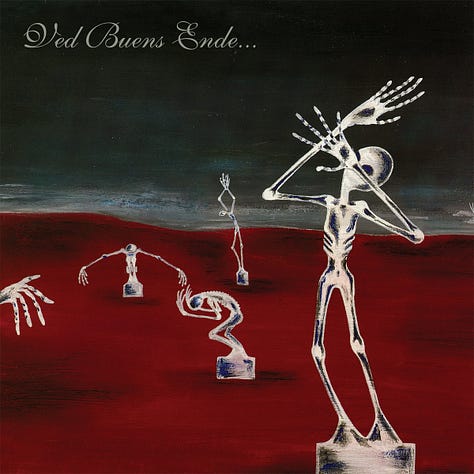
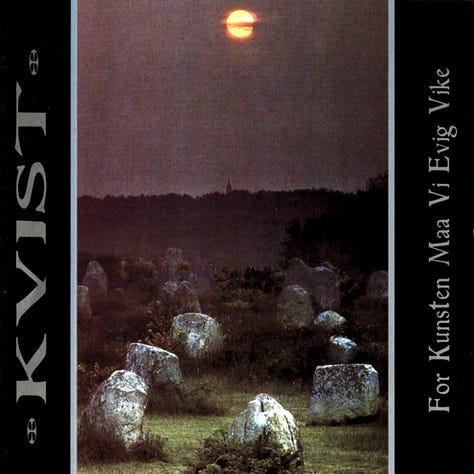
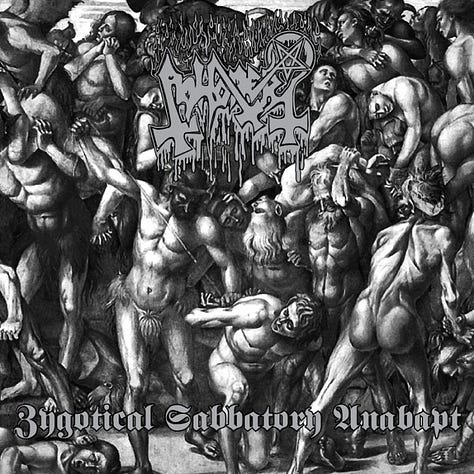
Ved Buens Ende - Written in Waters (1995)
The earliest album on this list is also the most singular. The second wave of black metal was in full flower in Norway when the trio of Ved Buens Ende recorded this profoundly heterodox album. Written in Waters is a woozy album that is often barely recognizable as metal (let alone black metal). Skoll’s bass plays the lead role almost as much as Vicotnik’s minimally-distorted lead guitar arpeggios, while Czral’s drums and wayward crooning shuffle and drone along. Despite all this, nothing about Written in Waters feels self-consciously avant-garde. Although you can hear echoes of VBE throughout much of the odder corners of the genre that soon proliferated (not to mention in Skoll’s work with Arcturus, in Vicotnik’s with Dodheimsgard, and most directly in Czral’s later project Virus), nothing has ever fully captured the mood of Written in Waters, which is something like watching great fragments of shale tumble down a mountainside in slow motion.
Kvist - For Kunsten Maa Vi Evig Vike (1996)
Where Ved Buens Ende stands out for how unusual they are, a band like Kvist manages to unfairly stay below the radar because of how seemingly regular-ass their black metal was. And it’s true, there are no avant-garde flourishes or unusual instrumentation to set For Kunsten Maa Vi Evig Vike apart, which means that Kvist earns their stone-cold classic designation by virtue of nothing other than compositional and stylistic perfection. There’s maybe a bit of early Satyricon flavor to the melodic riffing here, but the particularly stout production - with its guitar tone like running your tongue across a sandpaper block - gives Kvist space to shine. The back half of “Min lekam er meg blott en byrde” is so goddamned majestic that if you added timpani and squinted your eyes, you might be at the symphony.
Abhorer - Zygotical Sabbatory Anabapt (1996)
Singapore’s Abhorer made by far the rudest and crudest album of the ten on this list. Like their countrymates in Impiety, Abhorer originally formed around the same time as Blasphemy, and their earliest demo clatterings were in that similarly nascent black/death war metal vein. By the time they finally got around to recording their sole album, the dementedly mellifluous Zygotical Sabbatory Anabapt, Abhorer’s music was, if not exactly sophisticated, than at least cleaned up and tightened up enough to demonstrate that these dudes had some chops. There’s a more pronounced thrashy edge to these songs, so that although the war metal tag still mostly fits, Abhorer’s is a rich stew of Bathory, early Kreator and Destruction, Slayer, and Beherit. All good things!
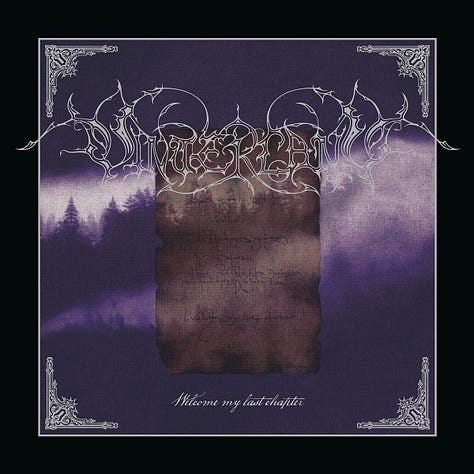
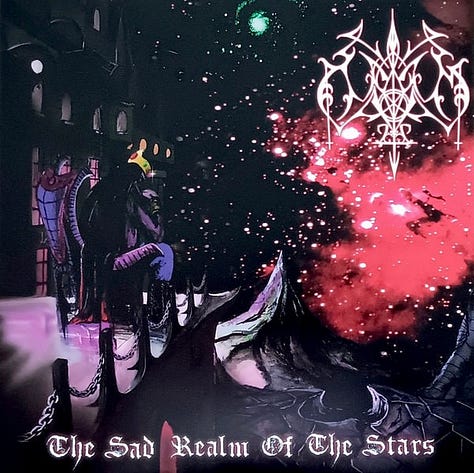

Vinterland - Welcome My Last Chapter (1996)
Along with Dissection’s Storm of the Light’s Bane, Dawn’s Nær Sólen Gar Niþer For Evogher, Sacramentum’s Far Away from the Sun, and Unanimated’s In the Forest of the Dreaming Dead, Vinterland’s sole album Welcome My Last Chapter is responsible for defining a particularly Swedish vision of melodic black metal in the mid-’90s. Vinterland’s black metal is elegant and often unhurried, with a rich tone and sometimes hypnotic riffing that feels like maybe it was eventually picked up by their Norwegian neighbors in Aeternus. Next time you hear someone talking about “blue cover black metal,” Welcome My Last Chapter is exactly what they mean.
Odium - The Sad Realm of the Stars (1998)
Where Vinterland’s sole album is an exemplar of melodic black metal, Norway’s Odium, on their only album The Sad Realm of the Stars, became paragons of symphonic black metal. This means, certainly, that the shadow of Emperor looms large, but to me, Odium feels like they belong in conversation with other albums that took the general outlines of that sound and took it to interesting, unique places (particularly Limbonic Art’s Moon in the Scorpio and Covenant’s Nexus Polaris). Although the album is positively dripping with symphonic keys, the keys are almost always in support of the scything intensity of the guitars rather than leading with melody. Odium also stands out for a particularly punishing drum performance courtesy of Anders Eek, whose other main band at the time was Funeral (in which the only punishment available was in striving to find a new floor for smallest BPM possible).
Weakling - Dead as Dreams (1999)
I think there’s a pretty strong case to be made that San Francisco’s Weakling is the most influential American black metal band. The longform atmospheric/melancholic songs on Dead as Dreams were surely the most direct influence on the sound of Wolves in the Throne Room and their many disciples. For some internet-stunted knobs that’s a black mark against Weakling from the start, but as always, thou art kindly invited to go take a walk outside, nerds. The delicate, keening way that the 20-minute title track opens, for example, is as much Godspeed You! Black Emperor as it is Burzum, but the key point that any haters are missing is that Dead as Dreams is utterly ferocious, packed with fiery riffs, anguished howls, and - most importantly - the compositional smarts to keep these songs held together over such long stretches of sweeping aggression. (Outside of black metal, Weakling’s John Gossard and Sarah Weiner were also part of another of metal’s hall of fame “one and done” records, The Gault’s titanically morose Even as All Before Us. Both albums are in desperate need of reissue.)
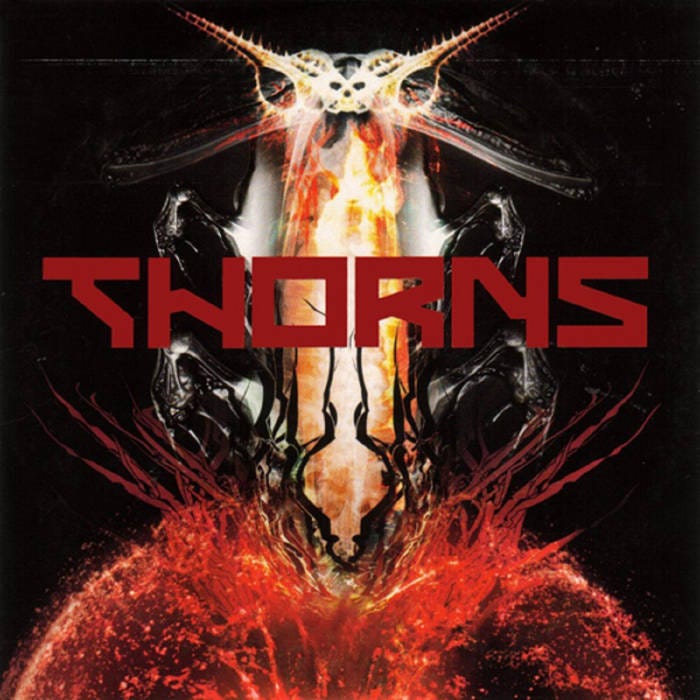
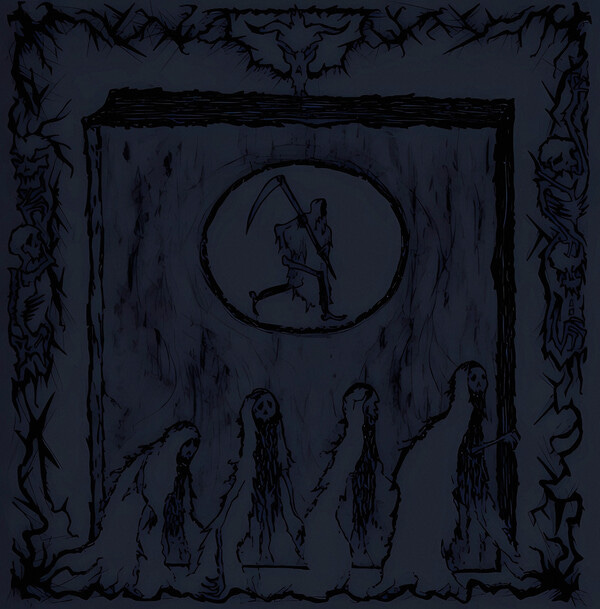

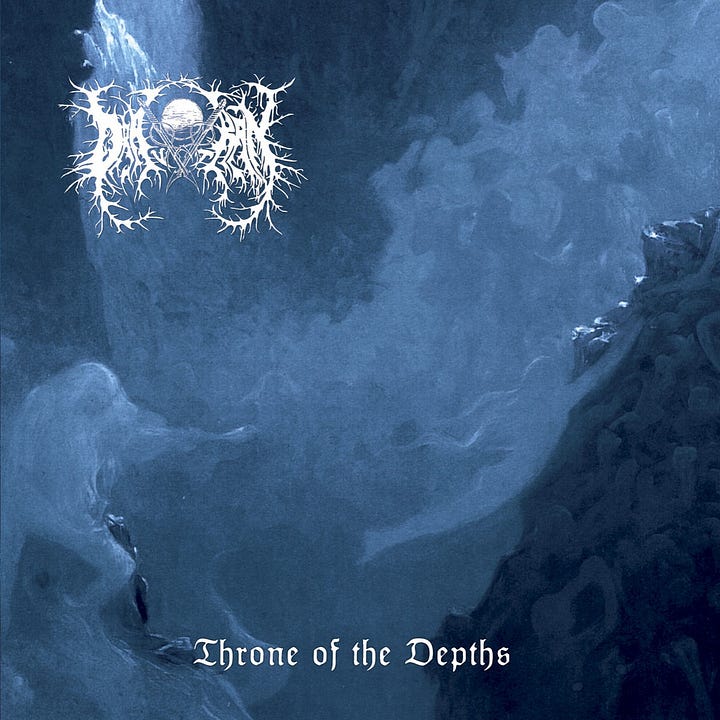
Thorns - Thorns (2001)
Although Thorns’s self-titled debut was the latest album released in the crucial turn of the millennium Moonfog trilogy of black/industrial milestones (preceded by Satyricon’s Rebel Extravaganza and Dødheimsgard’s 666 International, both released in 1999), Snorre Ruch’s Thorns pre-dated both bands. Thorns is a mechanistic, unforgivingly precise album, with Ruch’s guitar riffing and Hellhammer’s piston-taut drums vibrating like chopped and splintered shards of pure information. Add to that vocals from both Dødheimsgard’s Aldrahn and Satyricon’s Satyr and Ruch’s own keyboard ambience and sampling, and you’ve got an album that still - however improbably - sounds like the future.
Lurker of Chalice - Lurker of Chalice (2005)
After releasing two of US black metal’s grossest, most discomfiting albums in Tenth Sublevel of Suicide and Tentacles of Whorror, Leviathan main/only-man Wrest pivoted slightly with the self-titled album from Lurker of Chalice. Although still rooted in black metal, Lurker of Chalice approaches the genre from a base of ambient, droning unease. The songs are mostly languid, with choral vocals and doom-paced riffs chiming and echoing like a ship sailing through a tunnel of impenetrable obsidian. These songs are equal parts haunting and haunted, and their emanations are not always identifiable as new music or recontextualized samples (although “Spectre as Valkerie Is” samples the clip from The Omen that, erm, Iced Earth used for the chorus of Horror Show’s “Damien”). The only contemporary album I can think of that plumbs somewhat similar depths is the 2004 debut from The Ruins of Beverast, Unlock the Shrine, but even there, Lurker of Chalice is far less tethered to black metal. Wrest pulls in elements of goth, shoegaze, and even almost some dubwise influence in his bass. “Minions” sounds like Tangerine Dream and the Cure participating in a desperate occult ritual, while the acoustic strumming on “Vortex Chalice” gives the song a neofolk tinge. Twenty years on, and still nothing quite lurks like the chalice.
I - Between Two Worlds (2006)
If you’re the type who likes to nitpick, selecting I’s Between Two Worlds is a bit like I’ve invited you to an all-you-can-eat buffet of carp. “This album is barely black metal!” True enough. “Should this even count as a separate band, given how closely it hangs to Immortal’s Sons of Northern Darkness, not to mention Abbath and King’s continuing partnership on Abbath’s first album?” Fair points, but yes (and also shut up). The thing to note here - and I cannot put too fine a point on it - is that Between Two Worlds just fucking rules. Yeah, it sounds one hell of a lot like an even more Lemmy-fied Abbath fronting Sons of Northern Darkness after listening to Hammerheart, Blood on Ice, and Twilight of the Gods on repeat. So I guess, like, if any part of that description sounds bad to you? Friend, we are rowers on very separate oceans.
Drautran - Throne of the Depths (2007)
Germany’s Drautran provide yet another example of why, sure, experimentation and progression are fine, but sometimes the best things in black metal come from sheer passion and a seeming desire to perfect certain classic templates. There’s a large element of Nightside Eclipse-era Emperor and Vikingligr Veldi-era Enslaved in Drautran’s music, but with a bit more of a sweeping, pagan (not quite folk) metal angle shared with bands like Moonsorrow, Helrunar, Nagelfar, Fyrnask, or Árstíðir Lífsins. Throne of the Depths is an absolutely ripping album of pagan black metal that, despite what I said in the intro about cherishing these unreprised one-offs, really leaves me wanting more. The ultra-melodic riffs on “Dusk of the Fimbulwinter,” for example? Probably the best use of a major key in black metal since Nattens Madrigal.
That’s it for today. Let me know just how badly I’ve failed you and your own favorites not represented.
A few honorable mention/on the bubble-type albums not included in the list:
- Triumphator/Wings of Antichrist (1999): Very good, but later we got the far superior Funeral Mist.
- Dead Silent Slumber/Entombed in the Midnight Hour (1999): Also very good, but we also have the similarly one-album Profundi as well as a bounty of Naglfar.
- Midvinter/At the Sign of the Apocalypse Dragon (1997): Also also very good, but a bit long-winded and compositionally stilted.
- Caladan Brood/Echoes of Battle (2013): Also also also very good, but maybe I’m just hoping they’ll still release a follow-up?
- Strid/Strid (1994): Also also also also very good, but despite how influential it is, it’s just a two-song EP and I am a Full-On Mark For LPs.
If you insist, my personal rank-ordering of these at the moment looks like this:
1. Kvist
2. Thorns
3. Ved Buens Ende
4. Weakling
5. Lurker of Chalice
6. Odium
7. Drautran
8. Vinterland
9. I
10. Abhorer



